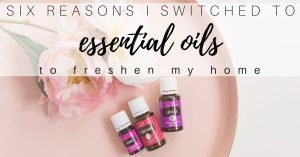Cleaning products, to vinyl shower curtains to the personal products we use every day are made and created with toxic chemicals that off-gas into the bathroom air. The small, enclosed space of the bathroom leaves them no place to dissipate and they remain in the air for long periods of time.
A secondary concern in the bathroom is the mildew and mold that can quickly form due to the high levels of humidity. Mold and mildew once started can be difficult to remove and keep at bay. Mold is an organic toxin and it’s actually a living organism. This means it needs a “food” source, which could be just about anywhere in the bathroom. Once the mold has a porous surface, it continues to grow and spread. Things like woodwork, rugs, grout and underneath caulking are the main culprits.
By paying attention to a few key areas in your bathroom, you can dramatically reduce the toxins and VOCs in the air as well as keep the risk for mold growth low.
Cleaning Products
With you kiddos in my house, I changed over my cleaning products to a non-toxic concentrated cleaner. It’s plant based and has no harmful chemicals or dangerous toxins, so I have 100% peace of mind know it’s safe for my whole family. Plus, it disinfects and cleans (which many homemade cleaners don’t do) which means I only need one bottle for my bathroom cleaning.
If you want to make the easy switch to non-toxic cleaning products, here’s a little homework to get you started:
- Visit ewg.org and search for your bathroom cleaning products.
- The worse the grade they have on the rating scale, the more quickly they should be thrown out.
- Replace toxic cleaning products with a non-toxic cleaner. You can find more on this page.
Ventilate Properly
Second, use your bathfan if you have one. A vented fan is often times installed in bathrooms to pull moisture out of the air and expel it outside the house. A high quality fan that draws the moisture up and out of the room is best used during shower and bathing use and for twenty minutes afterward as well.
Some maintenance tips on vented fans:
- Clean fan grates off every so often to remove dust and debris build up. This will prolong the life of the fan.
- If you’ve never checked, peek into your attic space to ensure that the venting connection running from your bathfan to the exterior of your home is in tact. Moisture entering your attic space on a regular basis can turn into a huge problem (mold!).
- If you or someone you know is moderately handy, you can inexpensively install a timer switch for your bathfan that will keep the fan on for 20-30 minutes after a shower or bath to help remove moisture from the room.
Check Grout & Caulking
You’ll also want to keep an eye on the grout between tile if you have a tile shower or tub. Once there is a small hole in the grout between tiles it can quickly turn into a bigger hole where water can travel down the back wall of your shower or tub area. If you notice a problematic area, you can use a tube of grout filler and fill in the areas as you notice them rather than regrouting the whole area. You’ll also want to watch grout for mildew as it can be a very porous surface that holds on to moisture. Drying out the bathroom as best you can will help this problem.
Dry Out Rugs & Towels
I recommend washing towels and rugs 1-2 times a week in the washing machine. You can put baking soda in the soap compartment and vinegar in the softener compartment and wash on the hottest setting. This will help remove product build-up and reside from the towel fibers without adding harsh chemicals. Finally dry them on the hottest setting to ensure they are completely dried out.
Seal Woodwork
If you do notice a spot that has faded and the sealant has come off, you can sand it down, stain it with a non-toxic stain if desired and then seal it with a safe varnish.
Get Rid of Plastic and Vinyl Shower Curtains
- Hemp: It’s naturally resistant to mildew and bacteria which can make it one of the best options for a liner
- Linen: You’ll want a heavyweight fabric to ensure the water is repelled and kept off the floor.
- Cotton: These can be great as you can wash them when you need to. Again, a heavyweight option is best to help repel the water and keep it in the shower or tub.
- Beeswax Coating: This can be an additional way to repel water, but definitely involves work on your end as you’ll have to reapply it from time to time.
Switch Out Your Hand Soap
- Thieves Foaming Hand Wash: This essential oil infused soap can actually support healthy immune function as it gently washes away dirt and bacteria.
- Homemade mix of ½ cup castile soap and ½ cup water. If you want to add a little moisture, you can add 1 tbsp of vitamin E oil (jojoba or sweet almond oil work too). You can create a naturally disinfecting soap by adding 15-20 drops of tea tree essential oil and 10 drops or so of lavender essential oil.
- You can create a foaming hand soap (which is easier for my kids to use) by purchasing foaming hand soap dispensers and using the recipe above but changing the ratio to ⅓ cup castile soap and ⅔ cup water and leaving out the vitamin E oil.







